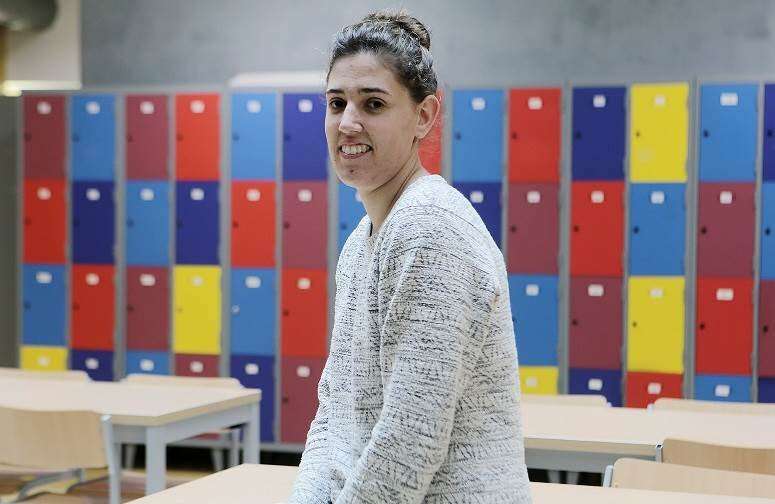Cartoons are appropriate for developing children's narrative skills and values

A study by the UPV/EHU's Department of Evolutionary Psychology and Education has explored the validity of narrative and non-narrative cartoons for developing narrative skills, moral reasoning, and values and countervalues in children in mainstream and non-mainstream education. The researchers were particularly interested in the effects of the structure of the cartoons on these aspects when the children process the information.
The researchers focused on media consumption by schoolchildren in the third year (eight- to nine-year-olds) and sixth year (11- to 12-year-olds) in primary education, their narrative skills, and the perceptions they have about the values/countervalues of the cartoons. The research was conducted in various phases divided into two subcategories.
First, the researchers identified the use that schoolchildren make of the internet and electronic devices, as well as the support and control strategies used by their parents, the positive and negative conceptions parents have about internet use, and difficulties and challenges they face when mediating their use. The aim of this section was to adapt the mediation programmes on the basis of the actual situation of families, schools and society.
Second, the researchers conducted various tests to delve further into the interpretation and decoding that the schoolchildren carry out on the messages transmitted by the fictional content of the cartoons. These tests revealed that the type of narrative or non-narrative structure that characterises the cartoons affects the reception, processing, comprehension, memory, and the eight- to nine-year-olds' narrative skills and perception of values/countervalues.
"The narrative cartoons we analysed have the same structure as classical stories (introduction, core and denouement). The thread can be easily followed. In the non-narrative cartoons we analysed, the events do not take place in the same context, the characters jump continually from an everyday atmosphere to another virtual one, and the individual watching has difficulty understanding the reasons and outcomes of the events. Additionally, in the latter, clinchers are used continually," explained the UPV/EHU researcher Eider Oregui.
Didactic proposals
To conduct the study, two types of cartoons were selected: Doraemon, with a narrative structure, and Code Lyoko, with a non-narrative structure. After displaying the cartoons, the researchers asked the schoolchildren to tell them what they remembered from what they had seen, and analysed their narrative skills, as well as the values and countervalues they had perceived.
The accounts by the schoolchildren who had watched the cartoons with a narrative structure were much longer and more detailed, and the values and countervalues were perceived effortlessly. In the case of the non-narrative ones, however, the accounts were very short, they had been altered, and focus was placed almost exclusively on the sequences of the action; the children also experienced greater difficulty perceiving the values and countervalues of the subject matter.
The researchers also measured the schoolchildren's attention capacity while they were watching the cartoons, and they noticed that the cartoons with a narrative structure provided the children with attention breaks. By contrast, during the non-narrative cartoons, the schoolchildren maintained continuous eye contact with the screen. In the narrative cartoons, "each one chooses, as a viewer, what to pay attention to or not—in other words, it involves voluntary attention, whereas in the non-narrative ones, attention is not voluntary because of the ongoing effect of the clinchers," she explained. "The viewers do not control their attention, which may mean that they do not properly understand the events when processing the information."
In any case, the researcher regards both types of cartoons as valid. "The same values/countervalues always appear in the narrative cartoons analysed, but in different situations, and this aids the children's comprehension and processing; yet it is possible to find more types of values and countervalues in non-narrative cartoons, which could be perceived with the right mediation or various pedagogical activities. That way, the effect exerted by the type of structure on the age groups included in the study would be prevented," said Oregui.
This study has given rise to some didactic proposals targeting schoolchildren, family members and professionals in the sphere of psycho-education and communication, and which are designed to encourage the development of children's narrative skills and education in values and countervalues through their favourite fictional content.
The researcher also referred to the importance of furthering the classification of cartoons; she proposes that they be classified not only on the basis of their content, but also on the basis of their narrative level or their structure and the values they deal with. Oregui said that in the end, "cartoons may be used both at school and at home to train children in values and countervalues, to deal with moral reasoning and to develop narrative skills, as long as suitable resources are used and are adapted on the basis of age."
More information: Eider Oregui et al. Habilidad narrativa e identificación de valores y contravalores en dibujos animados por alumnado de Educación Primaria, Anales de Psicología (2019). DOI: 10.6018/analesps.35.2.331441
















